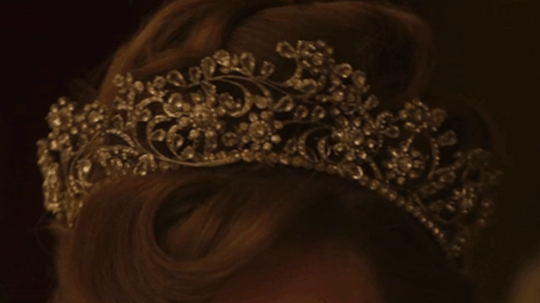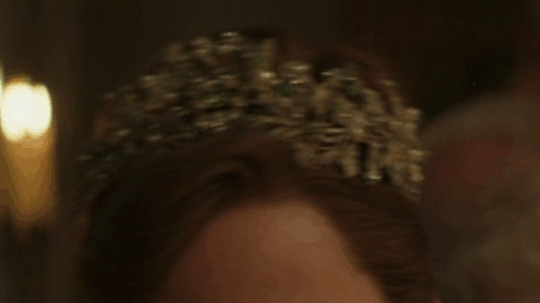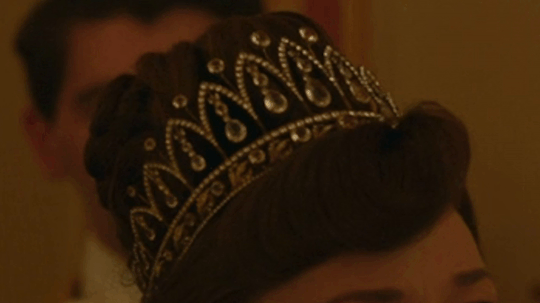#19th century america
Explore tagged Tumblr posts
Text

Thomas Jennings was a free man born in 1791 in New York City. He was 30 years old when he was granted a patent for a dry cleaning process. In his early 20s Thomas Jennings became a tailor, and later opened a dry cleaning business in the city. As a tailor. Jennings' skills were so admired that people near and far came to him to alter or custom tailor items of clothing for them. Eventually, Jennings reputation grew such that he was able to open his own store on Church street which grew into one of the largest clothing stores in New York City. While running his business Jennings developed dry-scouring. He had many customers complain of their clothes being ruined by stains and so he began experimenting with cleaners and mixtures that would remove the stains without harming the material. He earned a large amount of money as a tailor and even more with his dry scouring invention and most of the money he earned went to his abolitionist activities. In 1831, Thomas Jennings became assistant secretary for the First Annual Convention of the People of Color in Philadelphia, PA. Thomas L. Jennings Dry Scouring technique created modern day dry cleaning. Jennings was fortunate that he was a free man at the time of his invention. Besides all the other indignities and cruelties slaves had to face, they were also ineligible to hold a patent. Under the US patent laws of 1793 a person must sign an oath or declaration stating that they were a citizen of the USA. While there were, apparently, provisions through which a slave could enjoy patent protection, the ability of a slave to seek out, receive and defend a patent was unlikely. Later, in 1858, the patent office changed the laws, stating that since slaves were not citizens, they could not hold a patent. Furthermore, the court said that the slave owner, not being the true inventor could not apply for a patent either. Thomas Jennings died in New York City in 1856.
#black history#Thomas Jennings#dry cleaning#inventor#tailor#abolitionist#New York City#patent law#slavery#abolitionist activities#dry scouring technique#historical injustice#patent discrimination#civil rights activism#African American entrepreneurship#19th century America
466 notes
·
View notes
Text

Self-Portrait
Artist: William Sidney Mount (American, 1807-1868)
Date: 1832, New York
Medium: Oil on Canvas
Collection: The Long Island Museum of American Art, History & Carriages, Stony Brook, United States
William Sidney Mount was a 19th-century American genre painter. Born in Setauket, New York in 1807, Mount spent much of his life in his hometown and the adjacent village of Stony Brook, where he painted portraits, landscapes, and scenes inspired by daily life from the 1820s until his death in 1868 at the age of sixty.
#self portrait#william sidney mount#american painter#male#19th century america#oil on canvas#genre painter
9 notes
·
View notes
Text

Carte de visite of Captain William T. Barnitz, who served in the Pennsylvania 158th Infantry 1862-63
#is it just me or does he look a bit like...#Cornelius Hickey#having apparently attained immortality but no self-awareness about his possible incompatibility with a military career path#note image has been brightened sharpened and straightened from an angled view—refer solely to seller's pics if deciding to purchase#19th century#19th century America#1800s#1860s#19th century photography#carte de visite#cdv#19th century fashion#fashion history#historical fashion#men's fashion#military fashion#military history#uniforms#American Civil War
94 notes
·
View notes
Text

The Conversation
Alternate TItle: After Cranberry Picking, Two Women on a Field
Artist: Eastman Johnson (American, 1824-1906)
Genre: Genre Art
Date: 1879
Medium: Oil on Canvas
#genre#oil on canvas#19th century painting#cranberry field#women#conversation piece#eastman johnson#american painter#american culture#barrel#baskets#19th century america
4 notes
·
View notes
Text
One of the subtler elements left out of the past:
Is the reality that most people in the 19th Century who could read in the USA (which was far from everyone and that's including the third of the Southern population treated as human property and officially denied the ability to read and write, though this wasn't always easy to enforce and both enslaved people and their erstwhile owners could and did defy it at times) wouldn't have read 'the classics', which were often published in serial form in magazines.
They read dime novels, which were prototypes of pulp fiction and the later weird fiction and superhero genres. Dime novels also created the tropes we'd consider in Westerns at times before the Anglo-American presence even crossed the Mississippi in large enough numbers to notice.
#lightdancer comments on history#19th Century america#american history#the past as it actually was versus what people think it was
8 notes
·
View notes
Text
Book Review: The Impossible Girl
The Impossible Girl by Lydia Kang

19th Century America
Asian lead characters
crossdressing
dual lives
gender studies
romance
My rating: 3 of 5 stars
A biracial girl with two hearts. A sculptor who lives in the absence of affection. A medical student with no money and no friends. And a gallery of the hungry, the foolhardy, and the restless, seeking cash in hand to unearth the dead. THE IMPOSSIBLE GIRL posits these anxious figures as all-too-likely foils of their own story in mid-19th century New York. When the path to wealth, recognition, and romantic loyalty is barricaded by the greed of others, one need only sink to a lower level of avarice to muster the strength to surmount the troubles ahead.
Cora Lee is a biracial girl, born to an outcast mother of the New York middle-elite, who scraps and scrapes for money. She enjoys the camaraderie of her doting uncle, Alexander, a timid sculptor, and she keeps the company of a housekeeper and a few others. But for the most part, Cora's desire to chart her own future is wrought with danger. She is an unmarried woman, yes. She has Chinese heritage, yes. And she is a medical rarity, a human with two hearts beating beneath her ribs, yes. But Cora is also the city's most reputed and unyielding resurrectionist.
THE IMPOSSIBLE GIRL is about digging up the dead for spare coin. Whether sold to medical schools for examination or elsewhere, it's a lucrative affair. And sometimes, a rather complicated affair. Who scouts the grave site? Who pays off the guard? It's difficult but exciting work. If digging up dead bodies means Cora doesn't become one of them, then so be it. But Cora's smart, and she and her crew get stuff done.
This is also a novel about people who are trapped, by city or circumstances, by family or familiarity. Breaking free of the confines set by the class adherents who came before is a mighty task. And as one would expect, not everyone makes it out alive.
At its foundation, THE IMPOSSIBLE GIRL is a fun and clever novel. Cora slips from light to shadow, taking on the guise of a nonexistent twin brother ("Jacob") as she crosses over, from an upper-class Asian girl to a lower-class resurrectionist. Cora must conquer both worlds to earn enough money and presence to free herself. This theme, while clear at the outset, is later muddled through a multitude of competing side stories and delightful but underused red herrings. The novel gets too caught up in the excitement of its own unusualness, and so risks falling prey to ordinary moral overtures by its conclusion.
Perhaps that was the aim. If so, Cora's relationship arc with a bright-eyed medical student named Theodore matches that of the narrative pace for pace. Theo is overeager and annoying, but he's also the perfect ally for a witty 20-year-old woman who memorizes medical textbooks and sells dead bodies on the sly.
But if that wasn't the novel's aim. If these brief glimpses into the shallow affairs of the wealthy as well as the smudged, selfish idealism of the impoverished were not so purposely severed and interrupted and hemmed in, then THE IMPOSSIBLE GIRL is a book full of what-if scenarios that may well have ratcheted up the drama but never dared try. Betrayal is common among resurrectionists, but this seemingly common artefact of work is left unfulfilled elsewise until the novel's climax. Also, abundant secondary characters give the novel its color and flair, but they don't always settle on the right tone. Further, feuding medical professionals and lecherous sideshow-men pressure characters to make bad decisions, and yet, these unique supporting characters themselves are somehow free of action and guilt.
THE IMPOSSIBLE GIRL also falls into the rut of period-fiction stories whose cross-dressing female protagonist is intelligent and ambitious, but is eventually "outed" and threatened as a result. Exciting and dramatic, and possessing an inimitable narrative voice, certainly. But in the end, readers find a familiar refrain.
❯ ❯ Book Reviews || ahb writes on Good Reads
#review#fiction#the impossible girl#book review#urban thriller#betrayal is common#characters of color#authors of color#19th century america#chinese american#asian american#crossdressing#dual lives#gender studies
1 note
·
View note
Text
Time Travel Question : 19th Century IV and Earlier
These Questions are the result of suggestions from the previous iteration.
This category may include suggestions made too late to fall into the correct grouping.
Please add new suggestions below if you have them for future consideration.
#Time Travel#19th Century Paris#coca wine#absinthe#expressionists#19th Century#Pre-Raphaelites#Art History#Vienna#Statue of Liberty#Victor Hugo#Georg Wilhelm Steller#Steller's Sea Cows#18th Century#Extinct Animals#Sea Creatures#Duchess of Richmond#Brussels#Napoleonic Wars#Battle of Quatre Bras#South America#Charles Darwin#History of Science
169 notes
·
View notes
Photo

Historic distribution of buffalo herds in North America
608 notes
·
View notes
Text

The Privateer America, by James Joseph Brereton (1954-)
142 notes
·
View notes
Text
I know the most popular historical period for RusAme content is during the 20th Century (coughcoughcough Cold War coughcoughcough) BUT LISTEN TO ME…
The RusAme dynamic during the 19th Century, when their relationship was still more peaceful and somehow "innocent" …After years of isolation due to England's overprotection when America was a still young and naive nation, and Russia was a distant empire and Alfred had that admiration (a first crush) for Ivan…like that calm before the storm between two people who didn't know what the future would bring.
#aph rusame#hetalia#aph america#aph russia#historical hetalia#hws america#hws russia#sorry I just finished reading Anna Karenina and I have a bit of a brainrot about the 19th century in russian literature#rusame#amerus#ivan braginsky#alfred f jones
120 notes
·
View notes
Text




The Gilded Age + Headpieces
Bertha Russell's tiaras in Season 02.
#The Gilded Age#Bertha Russell#headpieces#costume drama#costumesource#period drama#perioddramaedit#1800s#19th century#tiaras#Crowns and Tiaras#silver#green#New York City#New York#Newport#Rhode Island#USA#North America
178 notes
·
View notes
Text




#frederick douglass#fourth of july#what to the slave is the fourth of july#independence day#abolition#declaration of independence#corinthian hall#rochester new york#american history#founding fathers#slavery#civil rights#historical speeches#july 5 1852#oratory#racism#white racial hatred#hypocrisy#white supremacy#systemic racism#black history#douglass speech#racial injustice#american hypocrisy#freedom and equality#19th century america#abolitionist movement#racial inequality#white privilege#oppression of black americans
30 notes
·
View notes
Text

Panamanian young lady. 19th century.
111 notes
·
View notes
Text

The May Queen (The Crowning of Flora)
Artist: Jacob Marling (1774-1833)
Date: 1816
Medium: Oil on Canvas
Collection: Chrysler Museum of Art, Norfolk, Virginia
Landscape scene depicting a May Day ceremony held in a clearing on the grounds of the Raleigh Academy, with the young female students dressed in white, some seated in the audience watching as one woman reads from a script, while another places a crown on the head of the May queen seated on a throne festooned with pink flowers. Nearby three young men in black suits stand in a row, one holding a clarinet in his hand. On the far right, a young woman is seated at a piano, and on the far left, young women scurry about preparing refreshments at a table covered with a long white tablecloth. In the background, the red brick Raleigh Academy building is visible.
#landscape#figure group#ceremony#holiday#musical instrument#education#clarinet#trees#school grounds#19th century america#jacob marling#american painter
0 notes
Text
In his 1839 travelogue Diary in America, Captain Frederick Marryat described the crowded and rustic hotels that a traveller in the United States could expect at this time, especially in remote areas far from cities and large towns. Rooms might include "three or four other beds," most of them with two people in each bed. Then, he shares an anecdote about an American friend:
A New York friend of mine travelling in an Extra with his family, told me that at a western inn he had particularly requested that he might not have a bed-fellow, and was promised that he should not. On his retiring, he found his bed already occupied, and he went down to the landlady, and expostulated. “Well,” replied she, “it’s only your own driver; I thought you wouldn’t mind him.”
A fascinating look at the attitudes around male bed-sharing in 1830s America, and an underutilized historically accurate take on "there was only one bed"! Imagine your OTP: forced to share a bed by the landlady.
#frederick marryat#diary in america#1830s#and there was only one bed#19th century#victorian#social history#masculinity#tbh it's interesting that the landlady assumed two men of very different classes would share a bed#and they were bed-fellows
75 notes
·
View notes
Text

schoolhouse, Fort Morgan, CO. circa 1915.
#schoolhouse#colorado#historic#vintage#american midwest#black and white#19th century#photography#great plains#ruralcore#midwest aesthetic#civil war era#lost places#americana#midwest#vintage photography#small town#rural living#rural areas#past life#midwest america#western#childhood
43 notes
·
View notes